Showing 711–720 of 1173 results

The book presents an in-depth study of various measures and provisions adopted to redress the problems of the tribals and for bringing them to the national mainstream. It provides extensive details of the ethnographic features of the entire primitive tribes with realistic description of their pathetic life.
Tribal people living in the remote areas of the territory forms an indispensable part of the Indian population. More than 250 different tribal groups inhabit in India, of which 62 tribal groups live in Orissa, each varying in culture, language, economic life and level of literacy. The thirteen tribal groups, namely Birhor, Bondo, Didayi, Dongria-Khond, Juangs, Kharias, Kutia Khond, Lanjia Saoras, Lodhas, Mankidias, Paudi Bhuinyas, Soura and Chuktia Bhunjia, having pre-agricultural level of technology and extremely low level of literacy have been recognized as Primitive Tribesû of Orissa. These tribal groups remain confined to their own small world and a probe into its history clearly shows that after a few generations the past turns into mythology. It was realized only after the Independence that to have a well-developed and prosperous nation, the needs and problems of the tribals were to be addressed and their welfare to be taken care thereof. The book presents an in-depth study of the various measures and provisions adopted, schemes introduced and plans implemented, since the Fifth Five-Year Plan, to redress the problems of the tribals; and apprises the readers about the on-going attempts in bringing them to the national mainstream through the 13 Micro Projects. Besides, the book presents an extensive detail of the ethnographic features of the entire Primitive Tribes with particular reference to their economic activities, social sanctions and varied problems faced by them. The realistic description of their pathetic life, deprived of all modern facilities, is highly touching and makes one wonder, do such people really exist in the 21st Century? The book will universally appeal to all readers and is highly recommended for the scholars of sociology and anthropology in particular.

The book presents an in-depth study of various measures and provisions adopted to redress the problems of the tribals and for bringing them to the national mainstream. It provides extensive details of the ethnographic features of the entire primitive tribes with realistic description of their pathetic life.
Tribal people living in the remote areas of the territory forms an indispensable part of the Indian population. More than 250 different tribal groups inhabit in India, of which 62 tribal groups live in Orissa, each varying in culture, language, economic life and level of literacy. The thirteen tribal groups, namely Birhor, Bondo, Didayi, Dongria-Khond, Juangs, Kharias, Kutia Khond, Lanjia Saoras, Lodhas, Mankidias, Paudi Bhuinyas, Soura and Chuktia Bhunjia, having pre-agricultural level of technology and extremely low level of literacy have been recognized as Primitive Tribesû of Orissa. These tribal groups remain confined to their own small world and a probe into its history clearly shows that after a few generations the past turns into mythology. It was realized only after the Independence that to have a well-developed and prosperous nation, the needs and problems of the tribals were to be addressed and their welfare to be taken care thereof. The book presents an in-depth study of the various measures and provisions adopted, schemes introduced and plans implemented, since the Fifth Five-Year Plan, to redress the problems of the tribals; and apprises the readers about the on-going attempts in bringing them to the national mainstream through the 13 Micro Projects. Besides, the book presents an extensive detail of the ethnographic features of the entire Primitive Tribes with particular reference to their economic activities, social sanctions and varied problems faced by them. The realistic description of their pathetic life, deprived of all modern facilities, is highly touching and makes one wonder, do such people really exist in the 21st Century? The book will universally appeal to all readers and is highly recommended for the scholars of sociology and anthropology in particular.
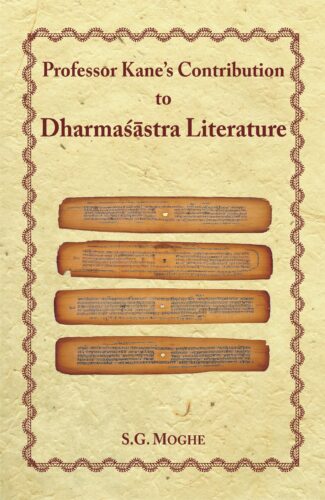
This study, in which Dr. Kane deals with the most obscure, hitherto-unnoticed sources, not just dispels widely-accepted fallacies or straightens out distortions but also (importantly) projects the fabulous legacy of Indias Dharmasastra literature.
If not peerless as an Indologist, Pandurang Vaman Kane (1880-1972) may have barely a few equals. A legitimate recipient of many, many enviable awards, including the Bharat Ratna the highest national honour in India, he was the distinguished Sanskritist, National Professor of Indology, Vice-Chancellor of Bombay University, Member of Parliament (nominated), and entitled Mahamahopadhyaya. And was a prolific author too his literary writings in English, Marathi and Sanskrit having been estimated to run across nearly 15,000 printed pages. Yet, M.M. Kane is to stay immortalized for his multivolume History of Dharmashastra: an encyclopaedic, at once authoritative work on ancient Indias religious and civil laws. This volume puts together nineteen of his essays to reinforce Professor Kanes unique insightfulness into Dharamashastra literature. Discreetly culled from the prodigious mass of his writings, these essays show how Dr. Kane conjures some of the most obscure, hitherto-unnoticed sources not just to dispel widely-accepted fallacies or straighten out distortions, but (importantly) to project the fabulous legacy of Indias Dharmashastra literature: in both its variegated richness and unflawed authenticity. Covering diverse themes from Dharmashastra literature: ranging from Pauranic legends to the Pauranic worldview of dharma and sacrifices, from the literary use of the Mahabharata citations to the questions of identity and chronology of Dharmashastra authors, Professor Kanes collection shows how King Bhoja evidenced the relevance of Dharmashastras to astrology; how far the Matsyapurana is indebted to Kautilyas Arthashastra; or how, in turn, Kautilyas classic compares with Kamashastra or Manu-Smriti; and how Vijnaneshvara is positioned vis-a-vis his predecessors.
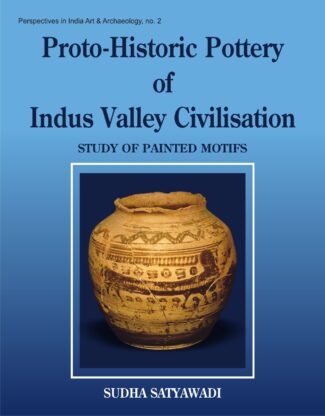
Dr. Satyawadis book is the first-ever study of painted pottery motifs of the Indian subcontinent (earliest times to 1750 BC). It explores the genesis and development of popular forms and classifies art motifs into their different genres.
In the 1920s was found one of the worlds oldest, most mysterious civilizations: the Indus Valley. Which, in view of the relatively more recent archaeological evidence, could possibly have evolved from a much older, indigenous culture: of about nine millennia ago some 6000 years before the growth of Mesopotamian urbanism or about 2000 years before the Egyptians. Among a variety of excavated material remains, pottery affords a significant clue that influences archaeologists conclusions. Despite many a scholars avowed fascination for the pottery of the Indian subcontinent since John Marshalls days, Dr. Satyawadis book becomes the first-ever, exclusive study of its art motifs: from the earliest times to 1750 bc Marshalling a whole diversity of painted-pottery motifs: from potsherds, from excavatory reports, and from as many as twenty archaeological museums of India, it explores the genesis of popular themes/forms and how they developed from their most primitive character to mature Harappan period with sharp focus on their creative purpose, stylistic/formal variants and their spatial-temporal parameters. Also surveying extensively the painted pottery of Indus Valley: of both pre- and post-Harappan cultures, the author painstakingly classifies art motifs into their different genres: religious, ritualistic, decorative, superstitious, and personal. And into their different forms too, like geometrical, floral, faunal, other. In her effort to probe the beginnings of pre-Harappan pottery motifs, the artist in Dr. Satyawadi visualizes their continuity not only in mature Harappan cultures, but even in contemporary folk and tribal art of India: almost in their pristine, primitive form keeping alive, from generation to generation, an insistent, inherently powerful tradition, despite the ravages of time. The author also tries to trace the linkages between the painted motifs (on pottery) of Indus Valley and other old-world cultures, notably, Mesopotamian, Egyptian, Afghan, Iranian, and Baluchi. With one hundred thirty six photographic reproductions, this study is supplemented by over 650 line-drawings which, (all beautifully copied by the author herself straight from museum exhibits), try to capture the panorama of protohistoric art motifs in their essential variety and pristine splendour.
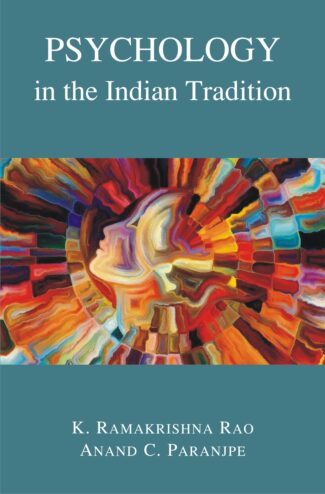
This authoritative volume draws the contours of Indian psychology, describes the methods of study, defines the critical concepts, explains the central ideas, and discusses their implications to psychological study and application to life.
Professors Ramakrishna Rao and Anand Paranjpe are two distinguished psychologist-philosophers who pioneered what has come to be known as Indian psychology. In this authoritative volume, they draw the contours of Indian psychology, describe the methods of study, define the critical concepts, explain the central ideas, and discuss their implications to psychological study and application to life.
The main theme is organized around the theme that psychology is the study of the person. They go on to present a model of the person as a unique composite of body, mind, and consciousness. Consciousness is conceived to be qualitatively and ontologically different from all material forms. The goal of the person is self-realization, which consists in the realization of the true self as distinct and separate from the manifest ego. It is facilitated by cultivating consciousness, which leads to some kind of psycho-spiritual symbiosis, personal transformation, and flowering of ones hidden human potentials.

This authoritative volume draws the contours of Indian psychology, describes the methods of study, defines the critical concepts, explains the central ideas, and discusses their implications to psychological study and application to life.
Professors Ramakrishna Rao and Anand Paranjpe are two distinguished psychologist-philosophers who pioneered what has come to be known as Indian psychology. In this authoritative volume, they draw the contours of Indian psychology, describe the methods of study, define the critical concepts, explain the central ideas, and discuss their implications to psychological study and application to life.
The main theme is organized around the theme that psychology is the study of the person. They go on to present a model of the person as a unique composite of body, mind, and consciousness. Consciousness is conceived to be qualitatively and ontologically different from all material forms. The goal of the person is self-realization, which consists in the realization of the true self as distinct and separate from the manifest ego. It is facilitated by cultivating consciousness, which leads to some kind of psycho-spiritual symbiosis, personal transformation, and flowering of ones hidden human potentials.
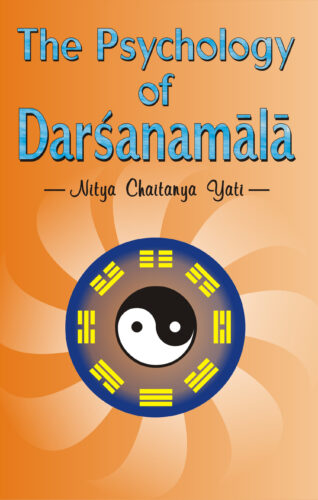
The Darsanmala, consisting 100 verses lucidly expresses Narayana Gurus unitive vision in expounding the core of Vedantic wisdom. Here, Guru Nitya, masterfully examines this wisdom from the psychological point of view to address basic questions of human psychology like how does one experience the world, the link between I, the experiencer, and that which is experienced, etc.
The Darshanmala, one of the last major works of Narayana Guru, contains 100 verses lucidly expressing the guru’s unitive vision expounding the core of Vedantic wisdom. Here, Guru Nitya Chaitanya Yati, using his deep scholarship in western psychological thought, masterfully examines this wisdom from the psychological point of view to address basic questions of human psychology like how does one experience the world, the link between I, the experiencer, and that which is experienced and the way in which one can guide one’s actions. Referring to western thinkers including Carl Jung, St John of the Cross and Kierkegaard, Guru Nitya Chaitanya Yati explores Narayana Guru’s absolutist vision to present insights into such items as consciousness, illusion, yoga, existence, awareness, consciousness and contemplative devotion and liberation. Referring to the thought and philosophy of Greek and other western philosophers and ancient scriptures on Advaitic philosophy, the commentary, simple in language and easy-to-understand, incorporates the perspectives and vision derived from the author’s guru, Nataraja Guru, who had translated the entire poem Darshanmala into English.

For daily devata worship this book will be very useful — it contains sacred hymns in praise of the principal gods and goddesses. Some selected Chaalisaas are also included.
For daily devata worship this book will be very useful — it contains sacred hymns in praise of the principal gods and goddesses. Some selected Chaalisaas are also included.
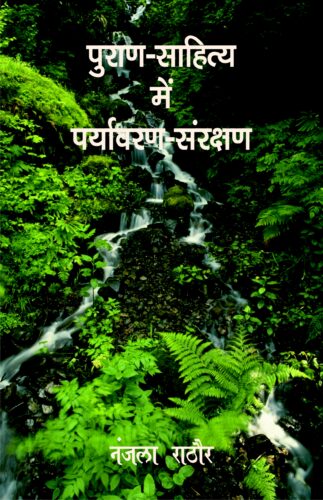
How important was environment in the ancient times as depicted in the Puranic literatures has been discussed in detail in this book.
How important was environment in the ancient times as depicted in the Puranic literatures has been discussed in detail in this book.
| There are no products |